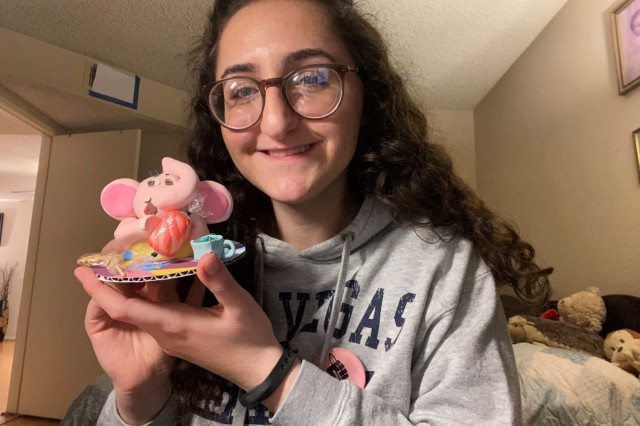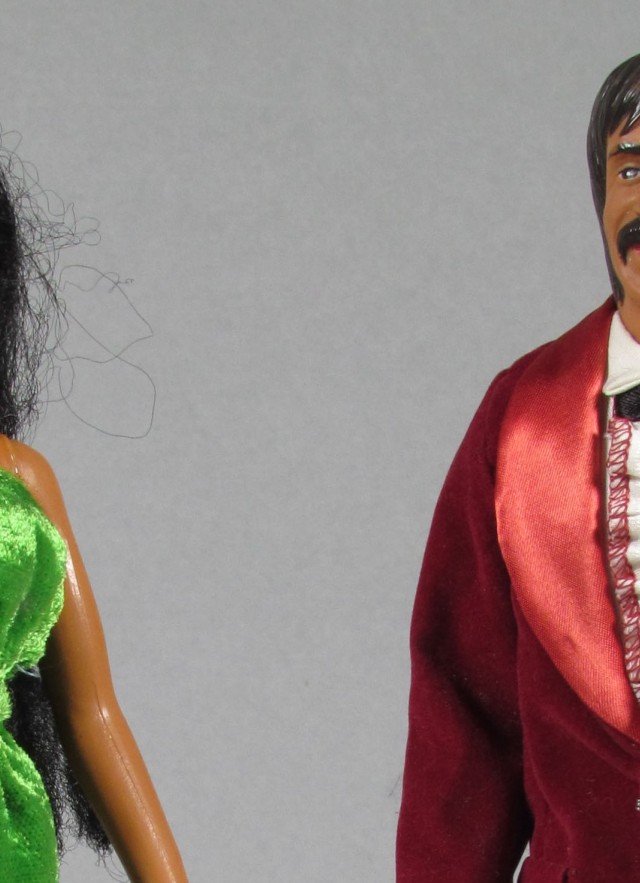
In 1976, as the entertainment world was brimming with excitement over the first Rocky film and Captain & Tennille celebrated the winning record of the year with Love Will Keep Us Together, a twelve-inch plastic doll also captured headlines in entertainment news. The release of the Sonny and Cher dolls, distributed by the Mego Corporation, arrived with a splash when the Cher doll surpassed sales of the ever-popular Barbie® doll by Mattel.
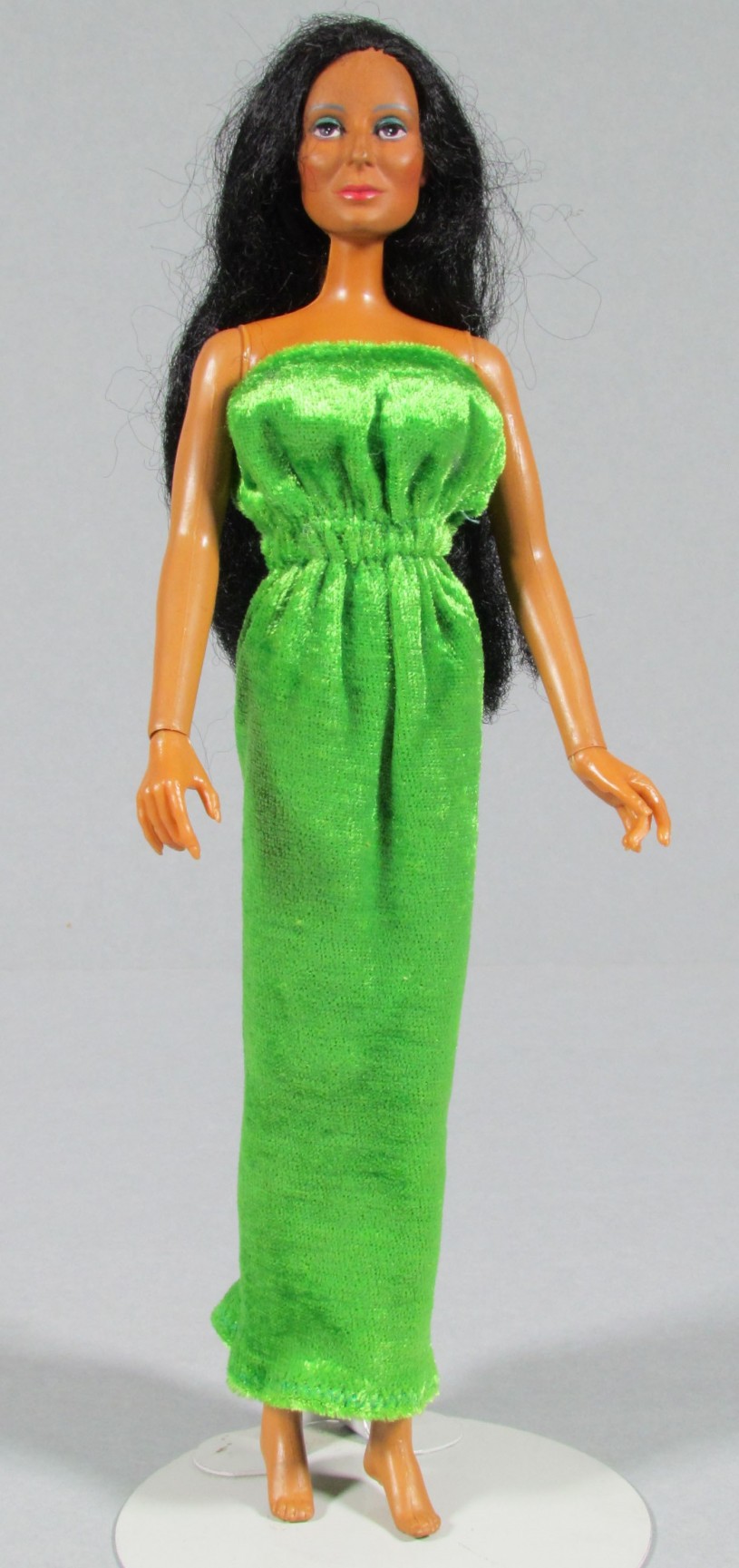
The Cher doll, made intentionally to compete with the Barbie®, launched to coincide with the popularity of The Sonny and Cher Show (1976-1977). The television variety show presented elaborate performances, skits, and a hefty amount of comedic teasing between the duo. The show was a reboot of The Sonny and Cher Comedy Hour (1971-1974) which ended when the couple separated. The return of the hottest duo on television was leveraged for the doll launch and Cher’s flair for risqué, bold fashion choices also brought interest to the toy dolls.

The Cher doll’s fashion line consisted of over 30 distinct outfits designed by famed costume designer Bob Mackie. Nicknamed Mr. Flash and the Sultan of Sequins, Mackie was responsible for the outrageously revealing (by 1970s standards) feathered and sequined gowns for both The Sonny and Cher Comedy Hour and The Sonny and Cher Show. Cher and Mackie had a long, fruitful collaborative relationship that spanned nearly 50 years. He has fashioned Cher’s iconic style for appearances on television, music tours, and award shows.
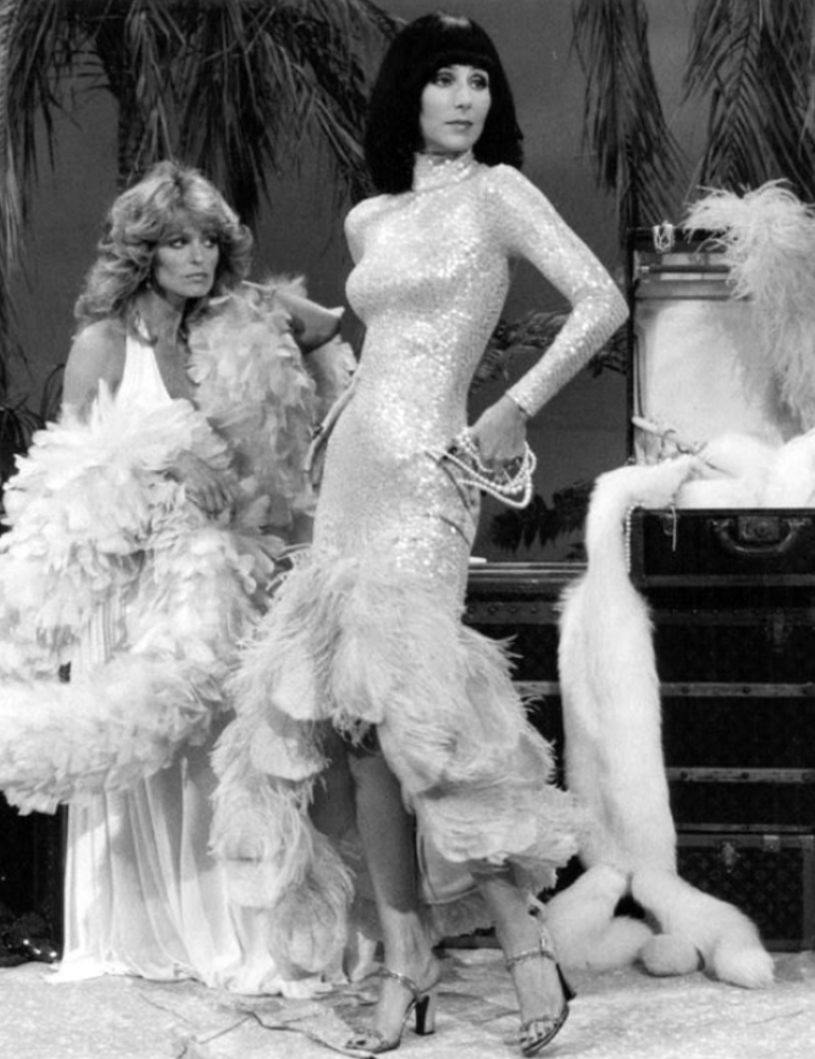
The Sonny doll, also released in 1976, had a less extensive wardrobe with twelve tuxedo options. Interestingly, the Cher and Sonny dolls have a remarkably darker skin tone than the other Mego Corporation dolls. This choice made by the manufacturer could be attributed to Sonny’s Italian ancestry, which was a common theme in the couple’s onscreen banter-- alongside Cher’s jabs at Sonny’s height and vocal skills.
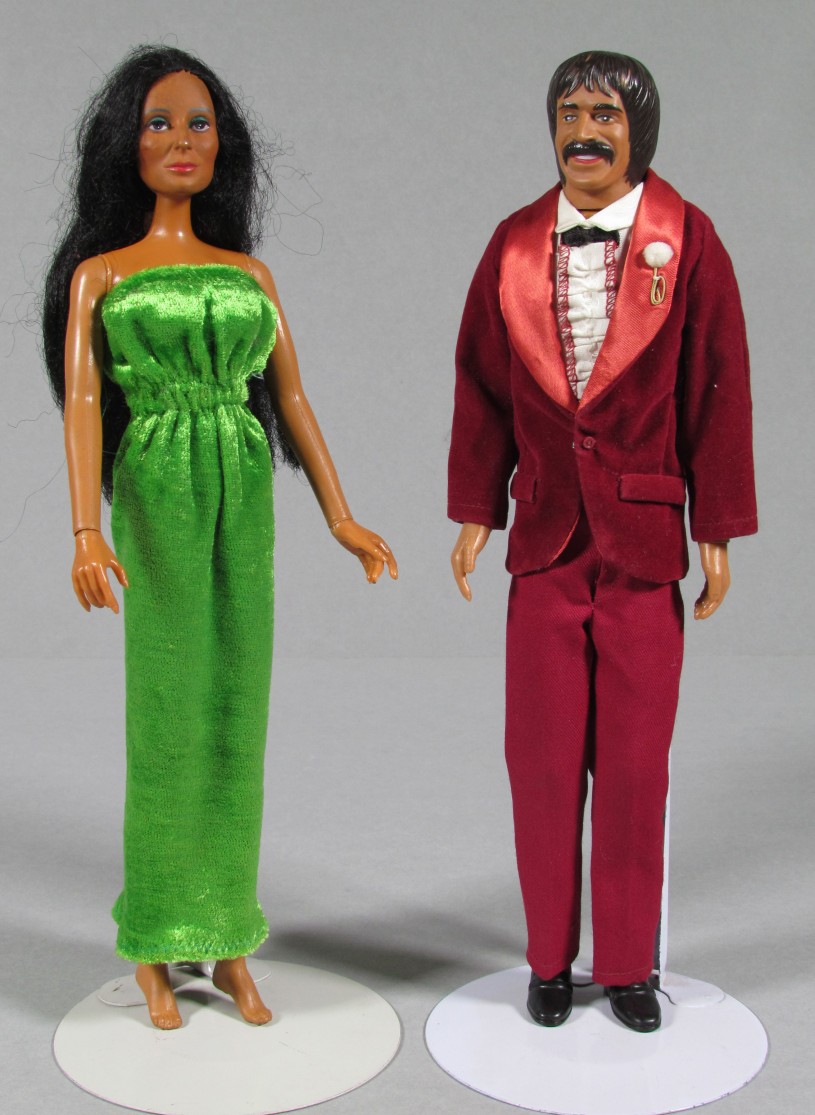
The Museum's doll wears a strapless green dress that is not one of the documented Bob Mackie designs released with the Cher doll. Its designer has yet to be identified, and it is likely that the doll could have been used as a toy by one of the donor's children. The original owner of this doll also comes from the entertainment community— actress, former radio host, and well-known doll collector, Jane Withers. A portion of Withers’ extensive doll collection is housed and cared for by the Natural History Museums History Department. Interestingly, Bob Mackie designed costumes for Jane Withers over the years and also formed a relationship with the popular designer.
Thirty years after the release of the Cher doll, a reprisal of the collaboration between Cher, Bob Mackie, and toy dolls was coordinated by Mattel for a series of collectors edition dolls called Timeless TreasuresTM. Bob Mackie’s iconic designs for Cher from the 1970s and 1980s were used to inspire the fashion of the dolls.

Today, Cher is well known as a singer, songwriter, entertainer, and award-winning actress, however, she has also been commended for her humanitarian efforts. She is the spokesperson for Children’s Craniofacial Association, supports the fight against AIDS, advocates for voting equity, and in 2020, championed the resettlement of an Asian elephant dubbed “the world’s loneliest elephant” to a sanctuary in Cambodia.
Cher, born Cherilyn Sarkisian and half Armenian, has additionally focused on advocacy work for the Armenian community. She has made humanitarian trips to Armenia, shared the story of her grandparents escaping the Armenian genocide, and expressed the value of educating others on the Armenian diaspora. In 2020, she called on the U.S. to take action over Azerbaijan’s war on Artsakh and continues to condemn the ethnic cleansing of Armenians in Artsakh.
45 years later we find that Cher is still making headlines and is now leveraging her stardom to help influence societal change.

